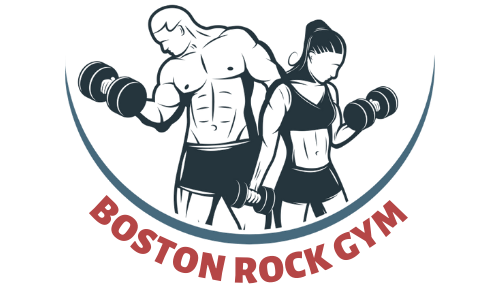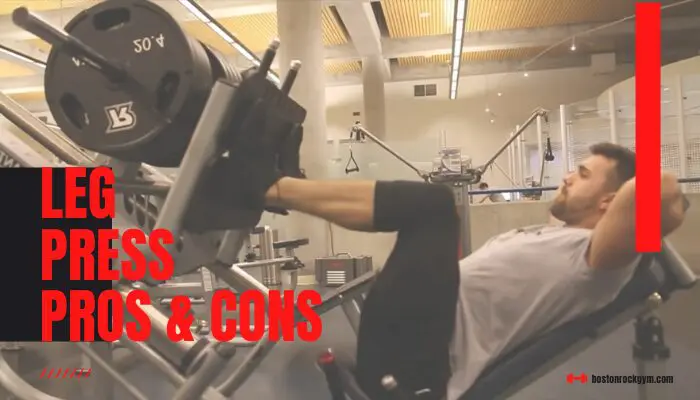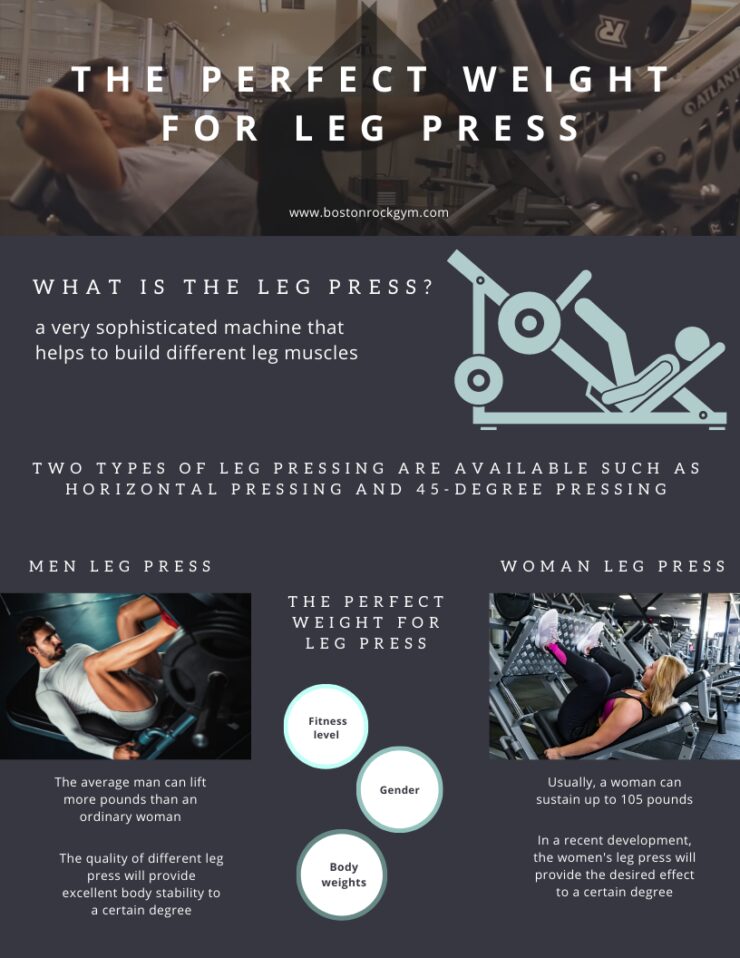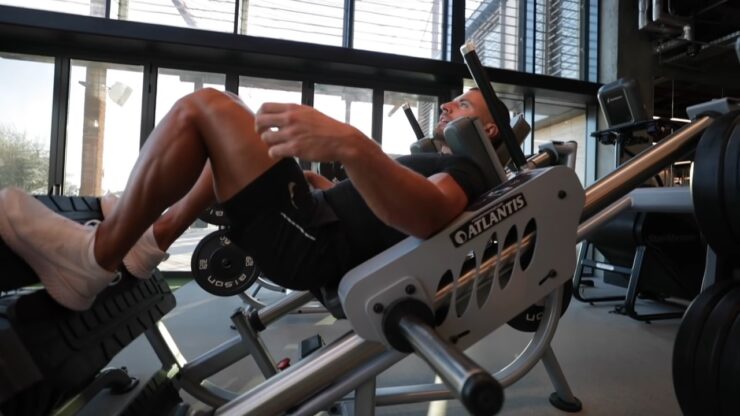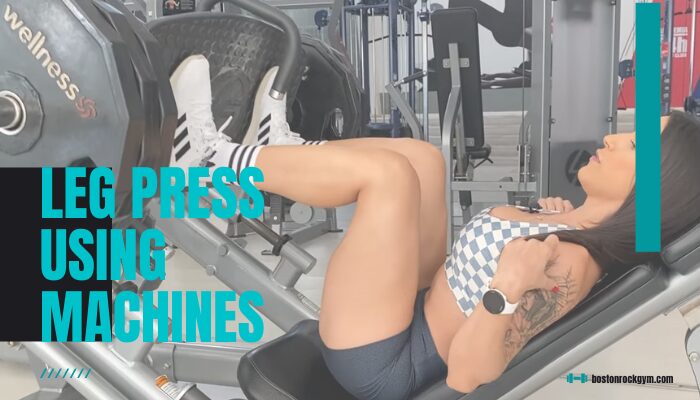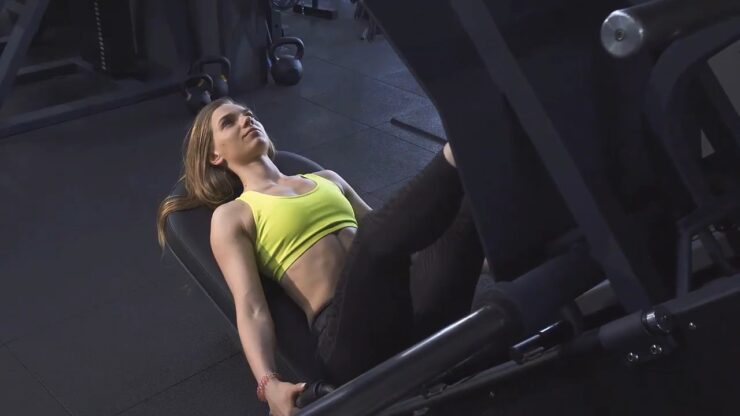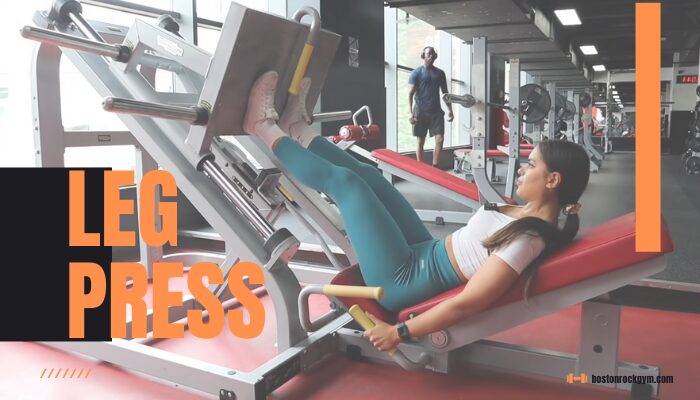Alright, it’s that time of the month again – leg day. You’re standing in front of the leg press machine, and you’re asking yourself, ‘How much should I be able to leg press?’ Whether you’re a gym rookie or a seasoned iron warrior, this question is fundamental.
Every gym has a leg press machine. It’s that beast of a machine you tried to overhead press when you first stumbled into the gym. But let me tell you, this machine is a quad-building powerhouse.
Im gonna break down all the nitty-gritty details you need to level up your leg press game. Im talking weight, reps, and yes, even gender plays a part in this leg-pressing saga.
Im also gonna tackle some of the best leg press machines on the market. If you’re thinking about building your own personal iron paradise, we’ll guide you on which machines you should consider.
And finally, if you’re stuck without a leg press machine, don’t sweat it. I’ve got some killer alternatives for you. And no, it doesn’t mean hitting chest for the fifth time this week. So, strap in and get ready to dive into the world of leg pressing.
Contents
Do You Know – How Much Should I Be Able to Leg Press
What is The Leg Press?
Well, folks, the leg press is a sophisticated piece of gym equipment designed specifically to build up those leg muscles. It’s a key player in any solid gym routine.
There are two main types of leg pressing that you need to be aware of. Mastering these can help keep you fighting fit and ward off a bunch of health issues:
- horizontal pressing
- 45-degree pressing
These techniques are not just effective, they’re also quite engaging, offering a unique experience to your workout routine.
Interestingly, the leg press can serve as a preventive measure for cardiovascular issues. That’s right, working those legs can benefit your heart health too.
Check out the video below for a quick intro to the leg press and how to preform it properly. It’s a crash course in leg day domination
How do you do leg press?
Performing a leg press might seem straightforward, but there’s more to it than meets the eye. Remember those two types of leg press we talked about earlier? The horizontal press and the 45-degree press? Well, they’re about to come into play.
Before you start pushing weight on the leg press, there are a few things to consider. Your weight, gender, and movement style all play a part in determining how much you should press.
The leg press is all about pushing against the machine with your legs. The machine pushes back, and this resistance is what helps to build muscles in key areas like your quadriceps and gluteus maximus.
But remember, it’s not about how much weight you can push, it’s about pushing the right amount of weight. Without the proper weight selection, you risk injury. So, start light, focus on your form, and gradually increase the weight as your strength improves. The leg press is a crucial part of any leg strengthening program, so take the time to do it right.
The Perfect Weight For Leg Press
When it comes to the perfect weight for the leg press, there’s no one-size-fits-all answer. It’s going to depend on a few things: your fitness level, your body weight, and yes, even your gender.
Fitness level
Your fitness level is a game-changer. An average Joe hitting the gym a few times a week isn’t going to be pushing the same weight as an Olympian. For most of us mere mortals, pressing around 268 pounds is a solid goal. But for those professional iron warriors, they’re looking at numbers north of 950 pounds.
Remember, it’s all about training smart. If you’re new to the leg press, don’t go loading up 270 pounds right off the bat. Work your way up gradually and focus on your form.
Body Weight
Your body weight also plays a part in how much you should be pressing. Generally speaking, the more you weigh, the more you’ll be able to press. But again, it’s not a hard and fast rule. It’s all about finding the right balance and working within your limits.
Gender
Now, let’s talk about gender. On average, guys can press about 169 pounds, while ladies are looking at around 102 pounds.
But remember, these are just averages. There are plenty of women out there crushing these numbers, just like there are guys who are working their way up to them.
How much can leg press average do in one day?
Well, that’s going to depend on your goals. Are you a powerlifter or more of a traditional bodybuilder? Your routine is going to look different depending on your answer.
If you’re a powerlifter, you’re likely doing fewer reps with heavier loads. Think along the lines of 5 working sets with a max of 5 reps, and taking a few minutes rest in between each set. This is all about building that raw strength and power.
On the other hand, if you’re following a more traditional bodybuilding routine, you’re looking at sets of 10 reps or more, or alternatively, 45-second working sets. Your rest periods will be anywhere from 1 to 3 minutes. Remember, your quads are a large muscle group, so they can handle longer rest periods. You’ll typically be doing between 3 to 5 working sets.
And let’s not forget about warm-up and cool-down sets. These are crucial for preventing injury and promoting recovery. They should be between 50 to 75% of your actual working sets.
Remember, the key is to find a routine that aligns with your goals and to listen to your body. Push yourself, but know your limits.
Pressing Techniques and Varaints
There are different techniques and variants of the leg press that can target different muscles and offer a range of benefits.
Adjusting your foot placement can change the game. Going for a wider stance or placing your feet higher on the platform can shift the focus to different muscle groups. This allows you to target specific areas and bring about desired results.
Basic leg pressing
If you’re new to the leg press, here’s a simple step-by-step guide to get you started:
- Position yourself on the leg press machine with your back and head resting comfortably against the padded support.
- Place your feet hip-width apart on the platform. They should be in line with your knees, creating a 90-degree angle.
- Grip the handles on the sides for stability.
- Push the platform away with your heels and forefoot. Your body should remain static, and the movement should come from your hips and knees.
- Extend your legs fully but don’t lock out your knees.
- Slowly lower the platform back to the starting position, ensuring your knees don’t cave inwards.
- Repeat for the desired number of reps.
Wide Stance Pressing
(Place your feet wider than hip-width apart on the platform)
The wide-leg press is a great way to target the inner thighs and glutes, providing a more comprehensive lower body workout.
Narrow Stance Pressing
(Place your feet closer together than hip-width apart on the platform)
The narrow stance press is an excellent way to target the outer thighs and can provide a more intense workout for your quadriceps.
Low Feet Pressing
(Place your feet lower on the platform)
The low feet press is a great way to target the quadriceps, making them work harder during the exercise.
Long Feet Pressing
(Place your feet higher on the platform)
The long feet press is an excellent way to target the hamstrings and glutes, providing a more comprehensive lower body workout.
Different Range of Motion Pressing
The range of motion in your leg press can significantly impact which muscles are targeted and how intensely they’re worked. Here are a few variants:
- Full Range of Motion: This involves lowering the platform until your knees are bent at a 90-degree angle, then pushing it back up until your legs are fully extended (but not locked out). This variant works all the muscles involved in the leg press evenly.
- Short Range of Motion: This involves only partially lowering the platform before pushing it back up. This variant can be useful for focusing on the quadriceps, as they’re primarily engaged in the latter part of the upward phase.
- Deep Range of Motion: This involves lowering the platform beyond the point where your knees are at a 90-degree angle, then pushing it back up. This variant can help target the glutes and hamstrings more intensely, as they’re engaged more in the initial part of the upward phase.
Buying Guide
Before you shell out your hard-earned cash for a leg press machine, there are a few things you need to consider. Buying the right machine can make all the difference in your workouts and the results you see.
The footplate
The footplate is where you place your feet, and its design can significantly impact your workouts.
- Adjustability: Look for a footplate that can be adjusted to different angles. This allows you to target different muscle groups and customize your workout to your needs.
- Size: The footplate should be large enough to accommodate different foot positions comfortably. Whether you’re doing a standard, wide, or narrow stance press, you should be able to position your feet correctly.
- Grip: The footplate should have a non-slip surface to ensure your feet stay in place during your workout. This is crucial for safety and for effective muscle engagement.
Shoulder plates
The shoulder plates, or pads, provide support and comfort during your workout, and their design can significantly impact your exercise experience.
- Comfort: Look for shoulder plates that are well-padded and comfortable. They should provide enough cushioning to support your shoulders and upper back without causing discomfort, even under heavy loads.
- Durability: The shoulder plates should be durable and able to withstand the pressure of repeated workouts. Look for high-quality materials that won’t break down or lose their cushioning over time.
- Positioning: The positioning of the shoulder plates is also important. They should be placed at a height and angle that allows you to maintain proper form during the exercise.
Backrest
The backrest is more than just a comfort feature. It plays a crucial role in maintaining proper form during the exercise and can significantly impact your workout experience.
- Comfort: Look for a backrest that is well-padded and comfortable. It should provide enough support for your back, allowing you to press heavy loads without discomfort.
- Adjustability: An adjustable backrest is a big plus. It allows you to change the angle of the backrest to suit your body type and the type of leg press you’re doing.
- Durability: The backrest should be durable and able to withstand the pressure of repeated workouts. Look for high-quality materials that won’t break down or lose their cushioning over time.
- Support: A good backrest should provide adequate lumbar support. This helps maintain proper spinal alignment during the exercise, reducing the risk of back strain or injury.
Materials and Warranty
The materials used in the construction of a leg press machine and the warranty offered by the manufacturer are both key considerations when making a purchase.
- Materials: Look for a machine that’s made from high-quality, durable materials. Steel is a common choice for the frame due to its strength and durability. The padding should be thick and resilient, and the upholstery should be tear-resistant and easy to clean.
- Warranty: A good warranty can provide peace of mind with your purchase. Look for a warranty that covers at least a few years and includes both parts and labor. Be sure to read the fine print to understand what is and isn’t covered.
- Customer Service: The manufacturer’s reputation for customer service is also worth considering. If something goes wrong with your machine, you want to be sure that the company will be responsive and helpful.
- Targeted Muscle Development: The leg press is excellent for targeting specific muscle groups in the lower body, including the quadriceps, hamstrings, and gluteal muscles.
- Safety: Compared to free weight exercises like squats, the leg press is generally safer as the movement is guided and there’s less risk of dropping the weight or losing balance.
- Great for Beginners: The leg press is a straightforward exercise that’s easy for beginners to learn and perform correctly.
- High Weight, Low Strain: The leg press allows you to lift heavy weights without putting too much strain on your back and shoulders, which is beneficial for those with upper body injuries or weaknesses.
- Variable Foot Positioning: You can adjust your foot position on the leg press to target different muscle groups, providing a versatile workout.
- Less Joint Stress: The leg press can be a good option for those with knee or hip issues, as it allows for heavy lower body training with less stress on these joints compared to squats or lunges.
- Progress Tracking: It’s easy to track your progress with the leg press as you can clearly see how much weight you’re able to press over time.
- Overload Principle: The leg press machine is an excellent tool for applying the overload principle, allowing you to gradually increase the weight you lift to build strength and muscle size.
- Rehabilitation: For those recovering from injury or surgery, the leg press can be a safer way to start reintroducing strength training.
- Balance Out Training: If your training routine is quad-dominant, the leg press can be adjusted to target the hamstrings and glutes, helping to balance out your training.
- Limited Functional Strength: The leg press doesn’t mimic movements you’d perform in daily life or sports, so it may not improve functional strength as effectively as other exercises.
- Less Activation of Stabilizing Muscles: The guided movement of the leg press means that the stabilizing muscles of the core and lower body are not as engaged as they would be in free weight exercises.
- Potential for Lower Back Injury: If performed incorrectly, the leg press can put a lot of stress on the lower back, potentially leading to injury.
- Less Comprehensive Workout: Unlike compound exercises like squats or deadlifts, the leg press doesn’t provide a full-body workout.
- Equipment Requirement: The leg press requires a specific machine, which may not be available in all gyms or home workout spaces.
Leg Press Alternatives
So, you’re stuck at home with no leg press machine in sight? Here are some killer alternatives that’ll have your legs begging for mercy:
- Squats: Squats are a fantastic exercise that targets the same muscle groups as the leg press. Bodyweight, dumbbells, your pet dog – whatever adds that extra burn, use it.
- Lunges: Lunges are another great lower body exercise that can be done with just your body weight or with added resistance. They look easy, but they’ll hit your quads, hammies, and glutes like a ton of bricks.
- Step-Ups: All you need for this exercise is a sturdy bench or step. This exercise is all about power and control
- Glute Bridges: Glute bridges will light up your hammies and quads too. If you’re feeling adventurous, slap a weight on your hips and prepare for the burn.
- Wall Sit: This one’s a classic. It’s you against the wall in a battle of the quads. How long can you last? Remember, pain is just weakness leaving the body.
- Jump Squats: They’re like regular squats but with more airtime. They’ll help you build that explosive power.
- Single-Leg Deadlift: This exercise targets the hamstrings and glutes, and also challenges your balance. You can do it with just your body weight, or add resistance with a kettlebell or dumbbell.
FAQ
Why can someone leg press more than squat?
Think of the leg press as the organized, disciplined sibling of the squat. It’s more structured, which can help you lift heavier.
Squats bring their own benefits to the table. Hitting more muscles and adding more dimensions to your workout.
Do leg presses build your thigh?
Absolutely. With the right routine and effort, leg presses can transform your legs. Different leg pressing techniques can target different parts of your legs.
How much weight can one take from a leg press?
The leg press is like the heavyweight champion of leg exercises. How much weight you can handle depends on your fitness level, age, and gender. But for an average Joe or Jane, pressing up to 200 pounds is a solid goal.
Verdict
The leg press is like the dark horse of the gym. We have laid out the pros and cons, and the different ways to press those legs.
The leg press is a beast when it comes to building muscles. It’s like the secret weapon of serious lifters looking to level up their game.
Leg press is also the secret to boosting your running speed and vertical jumps. But remember, like any exercise, it can be a double-edged sword if not done right
So, whether you’re a gym newbie or a seasoned lifter, don’t sleep on the leg press, bro. It might just be the game-changer you’ve been looking for.
References:
- https://www.livestrong.com/article/368257-the-average-weight-for-leg-press-exercises/
- https://www.verywellfit.com/how-to-do-the-leg-press-3498610
- https://www.bodybuilding.com/content/the-6-biggest-leg-press-mistakes-solved.html
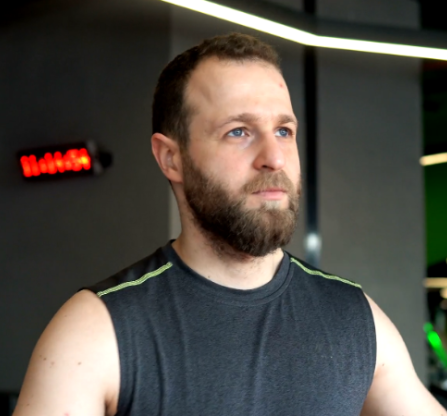
Working out is my life. I love to help others see the potential of their bodies as they transform into their best selves.
